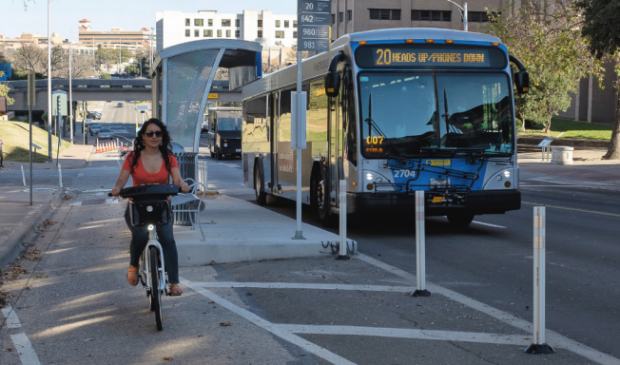Austin mobility leaders praise land use changes in support of 50-50 transit shift
Tuesday, August 29, 2023 by
Chad Swiatecki Transit leaders agree: Shifting half of all local travel away from individual vehicles by 2039 will require an aggressive mix of land use reform and expansion of transit options, including the Austin’s forthcoming light rail line. Exactly how those changes play out over the next decade-plus was the focus of a recent Urban Land Institute Austin breakfast, which dealt specifically with the goals of the Austin Strategic Mobility Plan.
Adopted in 2019, the Austin Strategic Mobility Plan is the area’s first comprehensive transit strategy since 1995, when the city had 500,000 residents, or a third of its current population.
As more people move to the city and contribute to stress on local roadways, moving residents away from daily car use is a must, said panelist Peter Mullan, executive vice president of architecture and urban design for Austin Transit Partnership.
“We have to recognize that we’re growing so fast. We’re not going to be able to survive this growth if we don’t build a culture of transit and don’t build a culture of alternative mobility methods, because we just don’t have the capacity to continue on with this,” Mullan said.
He added, “We have to build the infrastructure, and we have to build our regulatory frameworks, and we have to build our city in a way that helps to get us to that new culture, that new paradigm.”
As the city’s light rail line through downtown moves ahead with attempts to secure federal funding, Mullan said potential extensions beyond the 38th Street northern terminus and an eastern line that stretches to the airport are priorities if funding and partnerships can be arranged.
As the city moves ahead with transit policy – including the adoption of guidelines for equitable transit-oriented developments – planners are getting the tools needed to help the city’s growth align with light rail, bus lines and other modes of transportation, said Sharmila Mukherjee, executive vice president of planning and development for Capital Metropolitan Transportation Authority.
“We have a very powerful dashboard that assesses demographic, population, market risk, market factors, land use, all of that. But when the rubber meets the road, it’s the regulatory framework that (the) city of Austin is currently working on that is the most valuable piece,” Mukherjee said, adding that areas around the North Lamar Transit Center, the South Congress Transit Center and Plaza Saltillo offer the most potential.
“Crestview is another area that we’re going to be focusing on to improve intermodal safety and make sure that we support the (transit-oriented development) that is there and grow from that perspective,” she said. “North Lamar Transit Center to Crestview is another area that we would be making sure that we focus on (in regard to) building transit density, the right level of service to support the light rail.”
For Upal Barua, interim assistant director of the city’s Transportation and Public Works Department, City Council’s recent moves to update the building code are needed steps to encourage density and make transit more necessary.
“One of the things we’re trying to do right now is specifically removing the parking minimums for all the new developments, just so that we can increase density for our developments for the space that we would have used for parking, and to encourage and incentivize alternate modes so that people can walk and bike to a transit station,” he said. “Another important move was the resolution from City Council increasing the maximum number of units in a lot, to make it to three units for single-family lots.”
The Austin Monitor’s work is made possible by donations from the community. Though our reporting covers donors from time to time, we are careful to keep business and editorial efforts separate while maintaining transparency. A complete list of donors is available here, and our code of ethics is explained here.
You're a community leader
And we’re honored you look to us for serious, in-depth news. You know a strong community needs local and dedicated watchdog reporting. We’re here for you and that won’t change. Now will you take the powerful next step and support our nonprofit news organization?




